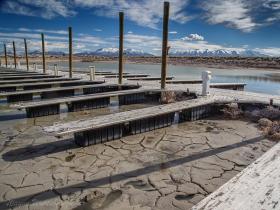Despite widespread concern about potential human health impacts from hydraulic fracturing, the lifetime toxic chemical releases associated with coal-generated electricity are 10 to 100 times greater than those from electricity generated with natural gas obtained via fracking, according to a new University of Michigan study.
articles
Saline Lakes in Dire Situation Worldwide, Including Utah's Great Salt Lake
Saline lakes around the world are shrinking in size at alarming rates. But what—or who—is to blame?
Mountain glaciers shrinking across the West
Until recently, glaciers in the United States have been measured in two ways: placing stakes in the snow, as federal scientists have done each year since 1957 at South Cascade Glacier in Washington state; or tracking glacier area using photographs from airplanes and satellites.
Sea-level rise, not stronger storm surge, will cause future NYC flooding
Rising sea levels caused by a warming climate threaten greater future storm damage to New York City, but the paths of stronger future storms may shift offshore, changing the coastal risk for the city, according to a team of climate scientists.
Groundwater and Tundra Fires May Work Together to Thaw Permafrost
Groundwater may play an unrecognized role in thawing Arctic permafrost following wildfires, according to new research.
NASA Follows Extra-Tropical Cyclone Lan Speeding Through Northern Japan
Now an extra-tropical cyclone over northern Japan, Lan was a typhoon when it made landfall just south of Tokyo over the weekend of Oct. 21 and 22. NASA's Aqua satellite and NASA-NOAA's Suomi NPP satellite provided imagery of the extra-tropical cyclone.










